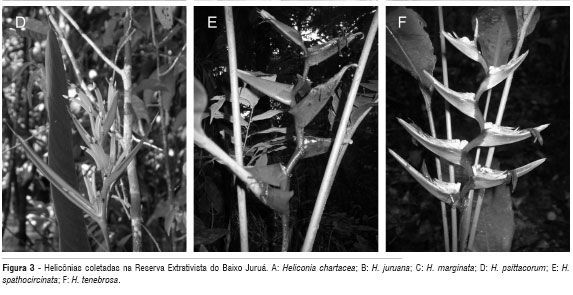Extractive Reserves (Reservas Extrativistas-RESEX, in portuguese) are defined as territorial spaces destined for auto-sustainable exploration and conservation of renewable natural resources for the traditional population. Moreover, they are an alternative source of income for improving life conditions of the local families. Amongst the possibilities of income for the communities that make up the RESEX, which we discuss, is the use of Heliconia understorey herbs. The Heliconia genus is one of the colorful groups of tropical forest non-timber plants. However, as an income source, it is unknown to the RESEX communities. We registered 11 species of Heliconia in the Baixo Juruá Extractive Reserve with potential as ornamental plants: H. acuminata, H. densiflora, H. hirsuta, H. lasiorachis, H. stricta, H. chartacea, H. juruana, H. marginata, H. psittacorum, H. spathocircinata and H. tenebrosa. Currently in Brazil, the commercialization of ornamental plants is expanding, but the Amazonian region seems not to be following this trend, demonstrating perhaps lack of political initiative. Even though it causes some impact on fauna an flora, the practice of extractive economy inside the forest reserves in Amazonia helps keep the ecological functions of the forest intact, preventing future losses of regional biodiversity. Additionally, it guarantees the continuity of traditional populations in the natural areas, with direct effect on the local and regional economy.
Understorey herbs; sustainability; conservation; ornamental plants; RESEX





